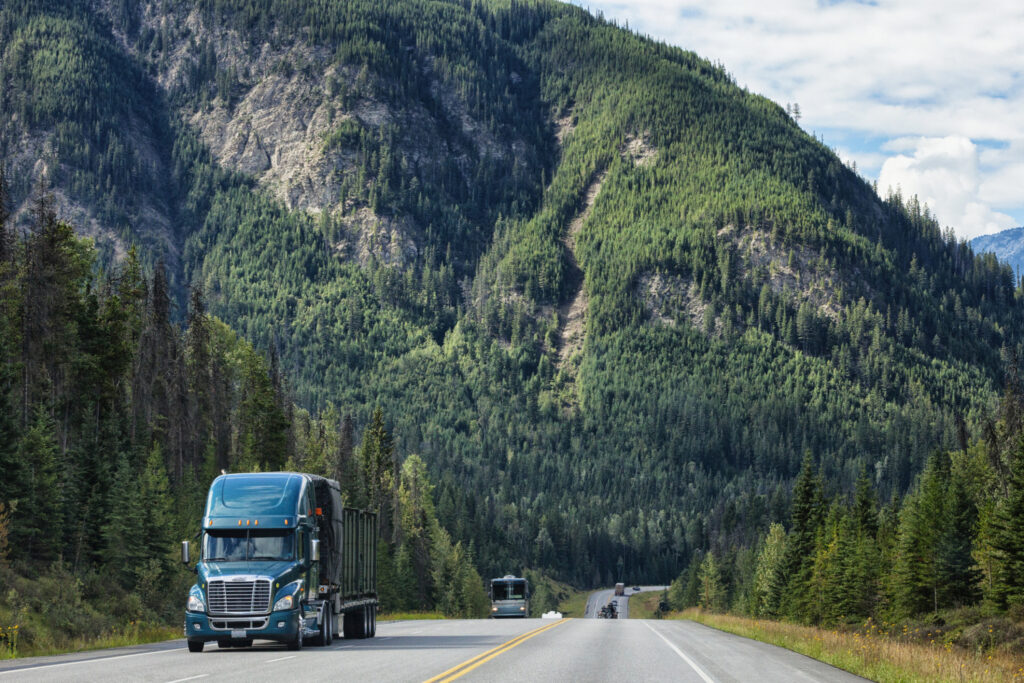B.C. upgrading rest areas to improve travel for truckers
Upgrades and enhancements to key highway rest areas are planned this summer as part of a multi-year plan to improve safety, accessibility, and amenities along British Columbia highways.
The province is supporting improvements at rest areas through a new $100-million Safety Rest Area Improvement Program over the next nine years. Of that, $28 million will be spent over the next three years to support the trucking industry and other travelers.

“Rest areas are an essential part of the highway system and help highway safety by reducing the risk of accidents related to fatigue or the need for people to stop on highway shoulders,” said Rob Fleming, minister of transportation and infrastructure. “By providing better facilities for people to take breaks from driving, these improvements to rest areas will help make traveling through our province safer and more comfortable for commercial truck drivers and everyone who uses the highway network.”
In 2023, improvements such as new lighting and signage, updating playground equipment, better accessibility, and enhanced rest area facilities, grounds and picnic areas, are planned for:
- Highway 1 Arbutus rest area on the Malahat Highway north of Victoria;
- Highway 1 Kamloops Lake rest area west of Kamloops;
- Highway 1 Skuppa rest area south of Lytton;
- Highway 97 Mile 80 rest area north of Fort St John; and
- Highway 16 Cluculz Lake rest area east of Vanderhoof.
In addition, as many as 30 seasonal students will be hired to provide landscaping and enhanced maintenance of rest areas, covering several highway corridors throughout the province.
Key locations for trucking
Longer-term planning, engineering and design work is also underway on substantial improvements at several key locations that will specifically support the trucking industry, including:
- Highway 1 Kamloops brake check west of Kamloops;
- Highway 1 Columbia rest area west of Revelstoke; and
- Highway 5 Clapperton brake check north of Merritt.
Government will also explore options for commercial vehicle access and parking to be built along Highway 1 near Golden. Planning, engineering and initial site development will start this year.
Safe stopping places
“This funding is especially important for commercial drivers who work long hours and require safe and accessible stopping places, so they can be focused and well-rested while they are on the road,” said Dave Earle, president, B.C. Trucking Association. “The more facilities that are accessible to large commercial trucks, the more drivers will stop and recharge when they need to.”
Planned improvements will also include upgrades to charging stations for electrical vehicles at the Anarchist rest area along Highway 3 and the Wire Cache rest area on Highway 5. Faster charging stations support the further development of the province’s “electric highway” and help meet the Province’s Clean B.C. Roadmap commitment for 100% of vehicle sales to be zero-emission by 2035.
“Our government is excited that British Columbia has one of the largest public charging networks in Canada,” said George Heyman, minister of environment and climate change strategy. “B.C. is a leader on climate action, and we will continue to prioritize these kinds of investments. We are working to expand this network and make it easier for people to charge their electric vehicles and decrease B.C.’s transportation emissions.”
Electric vehicle charging stations
The province is also reviewing and updating its rest area management plan to evaluate current needs and help guide future improvement projects across the provincial highway network. The provincial government is responsible for more than 200 rest areas throughout B.C., of which 86% are wheelchair accessible and 69% can accommodate commercial vehicles as large as and including semi-trailers. Approximately 13% of rest areas have electric vehicle charging stations and 6% have a wireless network.
Since 2017, the province has invested approximately $28.5 million into more than 60 sites, including the construction of new rest areas and enhancements to existing areas, such as improving facilities, accessibility, lighting and signage, as well as the installation of electric vehicle charging stations.
Have your say
This is a moderated forum. Comments will no longer be published unless they are accompanied by a first and last name and a verifiable email address. (Today's Trucking will not publish or share the email address.) Profane language and content deemed to be libelous, racist, or threatening in nature will not be published under any circumstances.